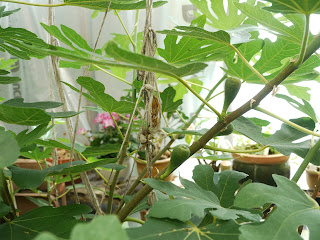1. Soils
2. Climate
3. Botany
4. Plant nutrition
5. Plant propagation
6. Pest Control
Companion Planting
Some plants help each other by improving the soil with minerals and nutrients. They can also attract birds and other natural predators that will deal with harmful insects. Some plants will enhance the growth rate and flavor of others when planted near each other. Companions are plants that are mutually beneficial to each other when planted together. Allies are plants that provide each other with protection from harmful pests and/or improve the growth of other plants. Enemies are plants that can cause detrimental effects when planted near each other.
Plant
|
Companions
|
Allies
|
Enemies
|
Asparagus
|
Basil, parsely, tomato
|
Pot marigold deters beetles
|
Garlic, onions, stunt growth.Beets stunt growth of pole
beans
|
Beets
|
Cabbage family,lettuce, onions
|
Garlic improves growth and flavor
|
Pole beans and beets stunt each others growth
|
Cabbage family broccoli,brussel sprouts,cabbage,
cauliflower,kale, kohlarabi
|
Beets, celery, chard, cucumber, lettuce, onion,
spinach,potato
|
Chamomile and garlic improve growth and flavor.
Catnip,hyssop, rosemary, sage, deter cabbage moth. Dill improves growth and
health. Mint deters cabbage moths and ants. Thyme deters cabbageworm.
Nasturtium deters bugs, beetles and aphids.
|
Kohlarabi and tomato stunt each other’s growth.
|
Carrots
|
Beans, lettuce, onions, peas, peppers, radishes, tomatoes
|
Chives improve growth and flavor. Rosemary and sage deter
carrot fly
|
Dill retards growth
|
Celery
|
Beans, cabbage, tomato
|
Chives and garlic deter aphids. Nasturtiums deter bugs and
aphids
|
|
Corn
|
Beans, cucumber, melon, parsely, peas, radish, tomato
|
Marigolds deter Japanese beetles
|
Tomatoes and corn are attacked by same worm
|
Lettuce
|
Beet, cabbage family, carrot, onion, radish, strawberry
|
Chives and garlic deter aphids
|
|
Peas
|
Beans, carrots, corn, cucumber,radish,turnip
|
Chives deter aphids
|
|
In my greenhouse, I have many micro-climates. I decided to group some plants together by growing them in pots. There is a pot of herbs-basil, sage, thyme, chamomile with a pepper in the middle. There are a couple of pots of balsam, a potted rose and a hisbcus and an ornamental fig. In the greenhouse, I have six mediterranean fig trees that provide a forest like canopy.
Here is a picture of some figs forming on my fig trees. The fig trees will be fifteen feet tall by the end of July. In October, I will cut down the fig branches, so the trees are about five feet tall. In January, new shoots will appear on the stumps of the cut branches and produce new branches.
Here is a picture of some figs forming on my fig trees. The fig trees will be fifteen feet tall by the end of July. In October, I will cut down the fig branches, so the trees are about five feet tall. In January, new shoots will appear on the stumps of the cut branches and produce new branches.
PRUNING FRUIT TREES
By pruning fruit trees either in the fall or just before spring, one can increase the vitality of the tree by promoting new growth. By cutting back severely the old growth, the root system has more stored nutrients that goes into the new growth and the tree will come back more bushier and the fruit will be much larger.
Click on MY PRUNING VIDEO LINK to view what I did to prune my cherry tree that was over 20 feet tall but I pruned it back to 10 feet.


No comments:
Post a Comment